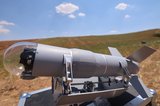Palantir bags $178 million US Army TITAN deep sensing contract
TITAN is a ground system that incorporates space, high-altitude, aerial and terrestrial sensors. (Photo: Northrop Grumman)
Palantir USG has won the US Army Tactical Intelligence Targeting Access Node (TITAN) ground system programme. The service announced the winner of the US$178 million deal on 6 March, under which Denver-based Palantir will build 10 TITAN ground stations.
The programme will support Army modernisation efforts by using AI and machine learning (ML) to enhance automation of target recognition and geolocation. Emerging technologies will also be used to integrate data from multiple sensors to reduce sensor-to-shooter timelines.
The contract award came after a three-year design and prototyping phase which compared Palantir’s system against one developed by RTX, previously known as Raytheon. Palantir’s subcontractor team on the effort has included Northrop Grumman, Anduril Industries, L3Harris, Pacific Defense and Sierra Nevada Corporation.
The programme’s focus on integrating feedback through regular demonstrations, or soldier touchpoints, has played a crucial role in ensuring that the company’s winning system incorporated the most essential capabilities required in the field, the company told C4ISRNET. Soldier input of this nature will persist over the next two years as Palantir will continue to refine its TITAN prototype.
Alongside the 10 ground stations, Palantir will also construct five basic variants to be installed on the Army’s Joint Light Tactical Vehicle. Although these will not feature a direct space downlink, they will still have access to data from space sensors.
Northrop Grumman, for its part, will undertake the integration, testing and deployment of TITAN systems to the US Army, furnishing actionable targeting information to enhance mission command and enable long-range precision fires.
TITAN has incorporated space, high-altitude, aerial and terrestrial sensors to deliver actionable targeting data, enhancing mission command capabilities. It was set out to empower the Army to fuse, correlate and integrate intelligence from a wide array of sensors, offering operational forces a comprehensive situational awareness.
More from Land Warfare
-
![Can Iranian air defence systems compete for exports?]()
Can Iranian air defence systems compete for exports?
Iran’s defence industry is now producing a range of surface-to-air missile systems and has begun to market them internationally. Using what appears to be a mixture of original and reverse-engineered elements, how do they stack up compared to other countries’ offerings?
-
![Land forces review: howitzers in the spotlight and Germany spends big to close the year]()
Land forces review: howitzers in the spotlight and Germany spends big to close the year
December saw several milestones on the howitzer front with billions of dollars worth of orders placed and Germany committing to more 6×6 and 4×4 vehicles. Taiwan was also approved for equipment orders worth $11 billion even as the year came to an end with China encircling the country as part of an exercise.
-
![Supply of new self-propelled guns is rising to meet looming demand]()
Supply of new self-propelled guns is rising to meet looming demand
As the need for self-propelled artillery continues to climb across Europe and NATO-allied nations, orders for existing capabilities continue to roll in while new and improved weapons are on the way.
-
![Dedicated drone munitions could unlock modular mission potential]()
Dedicated drone munitions could unlock modular mission potential
Top attacks have proven effective against heavily armoured vehicles in Ukraine. A new family of uncrewed aerial system-delivered munitions is looking to press that advantage further.
-
![Elbit bets on local content for US howitzer bid as it faces off against popular systems]()
Elbit bets on local content for US howitzer bid as it faces off against popular systems
The Israeli company hopes that producing its Sigma artillery system wholly in the US will help it win a key US Army contract, but it will be up against the popular CAESAR Mk II wheeled weapon and the K9 tracked.























